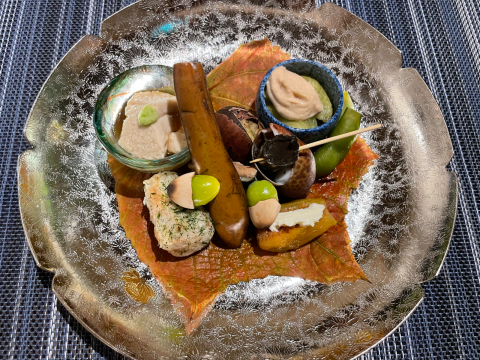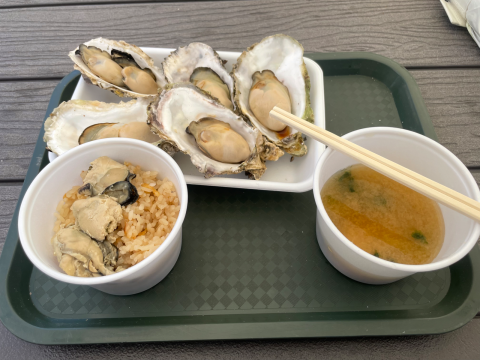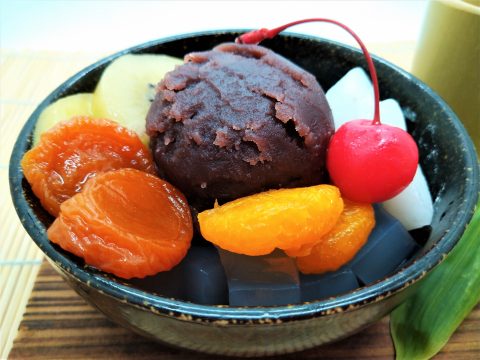Hiyashi Chūka(冷やし中華)
JAPANESE FOODS
09.08.2025
You may be wondering if it is a truly Japanese dish or a Chinese one, as the name suggests (chūka = 中華 = Chinese). Hiyashi chūka, literally meaning “chilled Chinese-style noodles”, is a popular Japanese summer dish. Despite the name, it’s a Japanese invention inspired by Chinese cuisine, and it’s especially common during the hotter months (June to August).
List of Ingredients
For this dish, you cannot miss noodles, typically called chūkamen (中華麺). These are usually more yellowish and with greater firmness, resembling the noodles served in China. As toppings, it is usually served with julienned cucumber, shredded omelet (kinshi tamago), ham, and tomato slices. Other options include crab or shrimp, ginger, nori (seaweed strips), or menma (bamboo shoots).

The sauce is the key
Without sauce, this dish would not exist. It is traditionally served with a sauce composed of soy sauce, sesame oil, rice vinegar, and sugar. As you can imagine, you can denote the acidity of the vinegar with a sweeter touch, as well as the intense flavor of the soy sauce.
It can also be served with a sesame-based sauce, which is like a paste, with a mostly sesame flavor.

Hiyashi chuka, a perfect meal I met before the trip to Home
I remember the first time I tried this was on a trip I took to Sado Island, in Niigata, on the west coast of Japan. I was waiting to catch the ferry to take me back to Niigata, and there was a small noodle restaurant at the port. I selected the first thing I saw that seemed like a cold dish (since it was late summer and still hot), not really knowing what I was choosing.
When the waiter served me my dish, I was pleasantly surprised as it was very colorful: yellow from the egg, green from the cucumber, pink from the ham, and red from the tomato. Not only that, but when I tasted it, an explosion of flavor and freshness flooded my palate, making it the perfect meal to end a trip and start the return home.

And so, it became one of my favorite homemade dishes
When summer comes, the only thing I feel like eating is something fresh and not heavy for my stomach. When I came back from my trip, I didn’t know the name of what I had eaten at the port, but after an intense internet search, I got the answer!
Thinking back to my first months in Japan, I remember that I used to prepare this dish at home every week. Then winter would come, and I would forget about it until the following summer. Today, thinking about what to cook this week, I remembered this delicacy. Will I be able to recreate the taste that made such an impression on me almost three years ago? I will try my best!


Carmen Alvarez
Carmen grew up in a city in southern Spain. After graduating from university, she decided to move to Tokyo to study Japanese. She enjoys walking the streets of Japan, discovering new places and trying different Japanese dishes.
Read previous articles by the writer
Read latest articles
KEYWORDS
- # PICKPICK
- # Resume
- # alcohol
- # Rice
- # Soup
- # winter food
- # Fast Food
- # seafood
- # spicy foods
- # raw food
- # fermented food
- # Transportation
- # MEAT
- # Edo culture
- # suits
- # clothing
- # drink
- # fish
- # seasoning
- # Japanese New Years Foods
- # Toshikoshi soba
- # Osechi Ryori
- # Ozoni
- # Christmas
- # Japanese fusion pasta
- # Wafu Pasta
- # Japanese Hot Pot
- # なべ
- # 鍋
- # Miyazaki
- # Chicken Nanban
- # Karamen
- # Autumn Wagashi
- # Mushi-yokan
- # Imo-yokan
- # Japanese Autumn Fruits
- # Autumn
- # Vending Machine
- # fall
- # dango
- # Chestnut rice
- # saury
- # Mushroom
- # Rice vinegar
- # Japanese condiments
- # 調味料
- # Sake
- # Mirin
- # Soy sauce
- # Japanese Noodles
- # Udon
- # Ramen
- # Yakisoba
- # Soba
- # Japanese Seaweed
- # 海藻
- # かいそう
- # Payslip
- # Training
- # Japanese summer foods
- # 和菓子
- # Wagashi
- # ryokucha
- # 夏
- # 飲み物
- # Ramune
- # ラムネ
- # Pokari Sweat
- # ポカリスエット
- # Calpis
- # カルピス
- # Mugicha
- # ume
- # 梅
- # うめ
- # umeshu
- # job hunting
- # tofu
- # Recruitment in Japan
- # miso
- # Japanese cuisine
- # Yellowtail and bonito
- # Children’s Day
- # Kashiwa Mochi
- # Chimaki
- # fruits
- # Kusamochi
- # Types of Agriculture in Japan
- # bread
- # パン
- # パン屋さん
- # japanese bread
- # shokupan
- # meal blead
- # anko bread
- # 桜
- # さくら
- # cherry blossom
- # visa
- # hanami
- # omotenashi
- # sakura
- # おもてなし
- # Japanese hospitality
- # oshibori
- # wet hand towel
- # hand towel
- # restaurant
- # Commuting in Japan
- # Women-only cars
- # Exit gate
- # japanese train
- # train
- # valentine
- # Japanese sweets
- # 朝食
- # Japanese Breakfast
- # Breakfast
- # Japanese
- # 日本
- # healthy
- # persimmons
- # hoshigaki
- # HR
- # work in Japan
- # jinji ido
- # corporate systems
- # Japanese work culture
- # bento
- # ekiben
- # shinkansen
- # omiyage
- # train station
- # Japanese culture
- # work culture
- # mentaiko
- # umeboshi
- # Japanese snacks
- # potato chips
- # Japanese potato chips
- # Japanese writing
- # seaweed
- # konbu
- # ocean foods
- # shio konbu
- # dashi
- # miso soup
- # food processing
- # pear
- # nashi
- # sweet potato
- # japanese sweet potato
- # stingray
- # satsuma imo
- # food value chain
- # homecooking
- # agriculture
- # Japanese homecooking
- # farming
- # nikujaga
- # shojin ryori
- # meat and potatoes
- # traditional foods
- # comfort food
- # buddhist food
- # manufacturing
- # factory
- # eihire
- # vegetarian
- # food and beverage
- # izakaya
- # yatai
- # japanese festival
- # taiyaki
- # matsuri
- # summer
- # Ikayaki
- # smart agriculture
- # shaved ice
- # kakigori
- # かき氷
- # summer dessert
- # Japan
- # Japanese foods
- # dessert
- # fruit
- # matcha
- # icecream
- # Pikcup
- # Pikc up
- # Pcikup
- # skilled labor visa
- # working visa japan
- # Dineer Table in Japan
- # Japanese manner
- # Japanese food
- # Japanese Table Manner
- # Chopsticks
- # Japanese traffic signs
- # traffic information
- # road rules in Japan
- # chocolate
- # green tea
- # Osaka
- # Work Japan
- # Japanese company
- # ikura
- # sushi
- # nigiri
- # wasabi
- # PCIK
- # PICK UP
- # PICK
- # PICKUP







